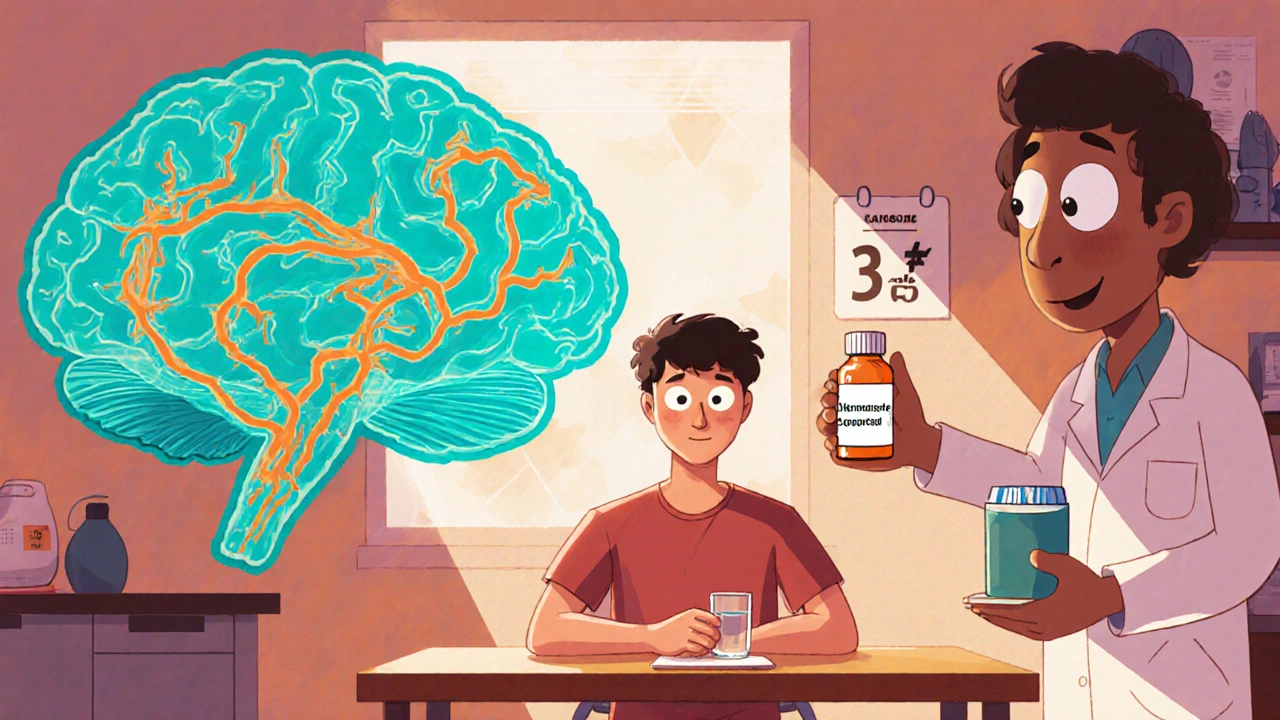
Renal Dosing Calculator for Acamprosate
Acamprosate Renal Dosing Guide
Acamprosate requires dose adjustment for patients with impaired kidney function. This calculator uses creatinine clearance (CrCl) to determine appropriate dosage based on clinical guidelines.
When it comes to treating alcohol dependence, the market is crowded with options that promise to curb cravings and support abstinence. Acamprosate is a medication that helps restore the brain’s chemical balance after prolonged alcohol use, reducing the urge to drink. But is it the best fit for every patient? Below we compare Acamprosate with the most common alternatives, breaking down how each works, what side effects to expect, and which scenarios they suit best.
Why medication matters in Alcohol Use Disorder (AUD)
AUD isn’t just a habit; it’s a chronic brain condition that alters neurotransmitter pathways, especially glutamate and GABA. Medications aim to correct these imbalances, making it easier for people to maintain sobriety while they rebuild healthier habits. Choosing the right drug can mean the difference between a smooth recovery and frequent relapses.
Acamprosate at a glance
Acamprosate is taken as a 666 mg tablet three times a day. It works by modulating the glutamatergic system, dampening the hyperexcitability that follows alcohol withdrawal. Clinical trials show a modest but significant reduction in heavy‑drinking days compared with placebo, especially when paired with counseling.
- Typical dosage: 1998 mg total per day (three 666 mg tablets)
- Approved use: Maintenance of abstinence in adults with diagnosed AUD
- Common side effects: Diarrhea, nausea, abdominal pain
- Renal considerations: Dose adjustment needed for creatinine clearance < 30 mL/min
Major alternatives and how they differ
The three drugs most often mentioned alongside Acamprosate are Naltrexone, Disulfiram, and Baclofen. Each targets a different neurochemical pathway.
Naltrexone
Naltrexone blocks opioid receptors, which blunts the rewarding sensations of alcohol. It can be prescribed as a daily oral tablet (50 mg) or as a once‑monthly injection (380 mg). Patients often notice a reduction in craving intensity within a few weeks.
- Common side effects: Nausea, headache, fatigue
- Contraindications: Acute hepatitis, liver failure, opioid dependence
- Best for: Individuals who struggle with strong cue‑induced cravings
Disulfiram
Disulfiram creates an unpleasant reaction if alcohol is consumed - a rapid rise in acetaldehyde causing flushing, palpitations, and nausea. The drug is taken once daily (250 mg), and adherence is critical because the deterrent effect disappears if doses are missed.
- Common side effects: Skin rash, metallic taste, liver enzyme elevation
- Contraindications: Severe heart disease, psychiatric disorders, pregnancy
- Best for: Highly motivated patients who can commit to strict abstinence
Baclofen
Baclofen is a GABA‑B receptor agonist that reduces the anxiety and stress that often trigger drinking. Doses start low (5 mg three times a day) and can be titrated up to 80 mg per day, depending on tolerance.
- Common side effects: Drowsiness, dizziness, weakness
- Renal considerations: No dose adjustment needed
- Best for: Patients with co‑occurring anxiety or those who cannot tolerate liver‑active drugs
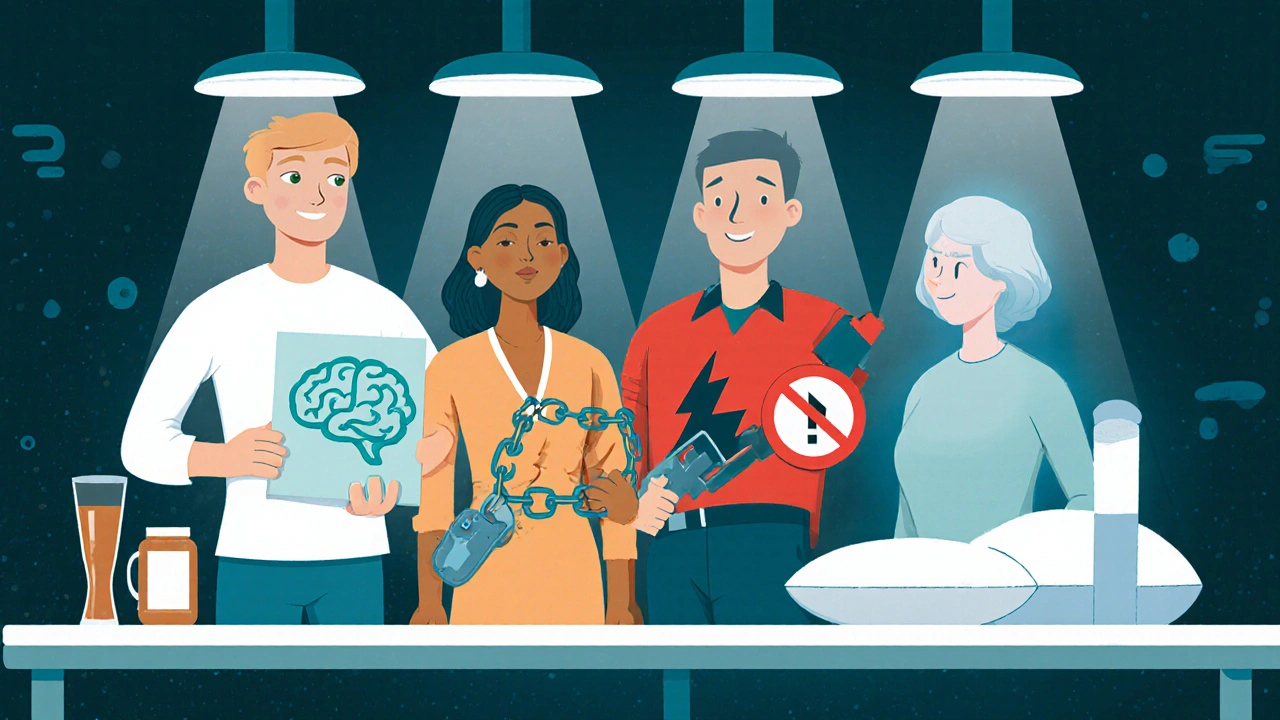
Side‑by‑side comparison
| Attribute | Acamprosate | Naltrexone | Disulfiram | Baclofen |
|---|---|---|---|---|
| Primary mechanism | Glutamate modulation | Opioid receptor antagonism | Acetaldehyde accumulation | GABA‑B agonism |
| Typical dosage | 666 mg × 3 daily | 50 mg daily or 380 mg monthly injection | 250 mg daily | 5-10 mg × 3 daily (titrate up) |
| FDA approval for AUD | Yes | Yes | Yes (for deterrence) | No (off‑label) |
| Common side effects | Diarrhea, nausea | Nausea, headache | Rash, liver enzyme rise | Drowsiness, dizziness |
| Key contraindications | Severe renal impairment | Liver failure, opioid use | Cardiac disease, pregnancy | Severe renal disease |
How to choose the right option for you
Picking a medication isn’t a one‑size‑fits‑all decision. Below is a quick decision matrix to match patient profiles with the most suitable drug.
- Renal health is a concern: Acamprosate dosage must be lowered; consider Naltrexone or Baclofen instead.
- History of liver problems: Avoid Naltrexone and Disulfiram; Acamprosate or Baclofen are safer.
- Strong cravings triggered by social cues: Naltrexone’s opioid blockade can blunt those urges.
- Need a strong deterrent effect: Disulfiram’s alcohol‑reactive response works when compliance is high.
- Co‑occurring anxiety or insomnia: Baclofen’s calming GABA‑B action may offer additional relief.
Always discuss these factors with a healthcare provider who can run lab tests, review medication histories, and monitor for side effects.
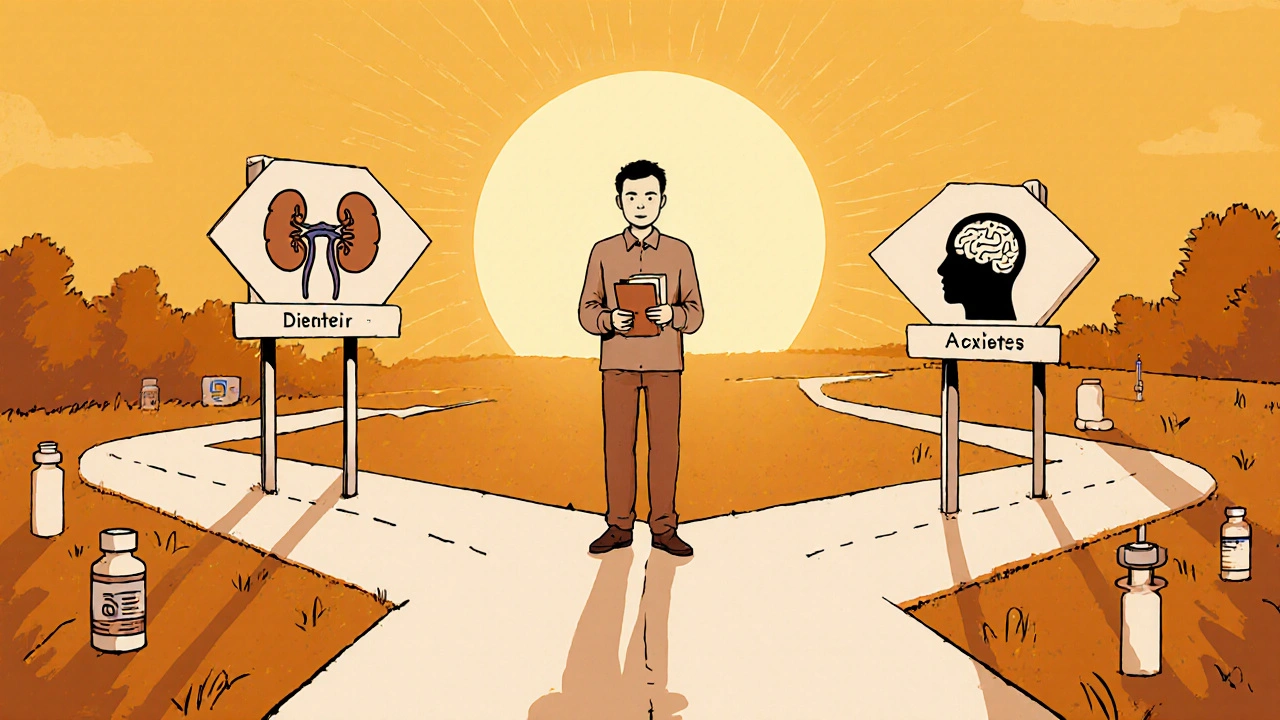
Practical tips for maximizing medication success
- Start with a clear treatment goal - abstinence or reduced drinking.
- Combine medication with counseling or support groups; evidence shows better outcomes.
- Track side effects in a daily journal; report any new symptoms promptly.
- Never mix alcohol with Disulfiram; the reaction can be severe.
- Stay hydrated and maintain a balanced diet; it helps the body process the drug.
Potential pitfalls and how to avoid them
Even the best‑studied drugs can backfire if misused. Common mistakes include:
- Skipping doses: For Acamprosate and Naltrexone, inconsistent intake reduces efficacy.
- Self‑adjusting dosage: Increasing Baclofen without medical guidance can cause severe sedation.
- Ignoring liver or kidney labs: Regular blood work catches early toxicity.
- Choosing medication based solely on cost: Cheaper options may lead to higher relapse rates, costing more in the long run.
Continuous communication with a prescriber keeps the plan on track.
Frequently Asked Questions
Can I take Acamprosate and Naltrexone together?
Both drugs are approved for AUD, but they target different pathways. Some specialists prescribe them together for patients with severe cravings and persistent glutamate dysregulation. This combo should only be tried under close medical supervision because side‑effect profiles can overlap.
How long does it take to feel the effect of Acamprosate?
Most patients notice a gradual drop in craving intensity after 2-3 weeks of consistent dosing. Full benefit often appears around the 4‑week mark, especially when combined with therapy.
Is Disulfiram safe for someone with heart disease?
No. Disulfiram can cause sudden blood pressure spikes and arrhythmias when alcohol is consumed. Patients with coronary artery disease, hypertension, or a history of heart attacks should avoid it.
Can I use Baclofen if I’m pregnant?
Baclofen is classified as pregnancy category C, meaning risk cannot be ruled out. Expectant mothers should discuss alternatives with their doctor before starting any GABA‑B agonist.
Do these medications cure alcoholism?
No drug can cure AUD on its own. Medications support the brain’s recovery and help maintain abstinence, but long‑term success relies on behavioral change, support networks, and lifestyle adjustments.
Choosing the right medication involves weighing brain chemistry, health status, and personal motivation. Whether you settle on Acamprosate, Naltrexone, Disulfiram, or Baclofen, a tailored approach backed by professional guidance offers the best shot at lasting recovery.
11 Comments
Gary Campbell
October 26, 2025 at 22:48 PM
What the big pharma doesn’t want you to read is that they design these meds to keep you buying forever. Acamprosate, Naltrexone, even Disulfiram are marketed as miracle fixes while the real cure is hidden in the shadows. The trials are funded by the same corporations that profit from your relapse, so take every statistic with a grain of salt. They also slip subtle neurotransmitter tweaks that make you crave their next product. Trust the data, but question the source.
renee granados
October 27, 2025 at 05:44 AM
Enough with the fairy‑tale, the only thing that matters is stopping the booze, not chasing pills.
Stephen Lenzovich
October 27, 2025 at 12:41 PM
From an American standpoint, we should prioritize medications that reinforce personal responsibility and economic independence, not foreign‑origin compounds that muddle our healthcare sovereignty. Acamprosate, with its renal adjustments, exemplifies a drug that respects our rigorous standards, unlike the over‑hyped European Naltrexone injections that aim to pander to a global market. Our clinicians must champion treatments that align with national values and fiscal prudence.
Ramesh Kumar
October 27, 2025 at 19:38 PM
Actually, the pharmacology behind each of these agents is pretty straightforward: Acamprosate modulates glutamate, Naltrexone blocks opioid receptors, Disulfiram creates an aversive reaction, and Baclofen enhances GABA‑B activity. All of them have solid evidence bases, but the choice really hinges on liver and kidney function plus patient preference. If you’re unsure, a quick lab panel can guide you to the safest option.
Barna Buxbaum
October 28, 2025 at 02:34 AM
Great rundown! For anyone reading, remember that medication works best when paired with counseling, peer support, and a realistic goal‑setting plan. Keep a daily symptom journal to track side‑effects and share it with your prescriber; early tweaks can prevent larger issues down the road. Also, staying hydrated and maintaining a balanced diet can smooth out most gastrointestinal complaints from Acamprosate. Stay hopeful-you’ve already taken the hardest step by seeking info.
asha aurell
October 28, 2025 at 09:31 AM
While the advice is solid, the post glosses over the cost barriers many patients face.
Carolyn Cameron
October 28, 2025 at 16:28 PM
The comparative analysis presented herein, albeit comprehensive, would benefit from a more rigorous statistical appraisal, particularly concerning the confidence intervals of relapse rates across the pharmacotherapies discussed. Moreover, inclusion of pharmacoeconomic evaluations could elucidate the long‑term sustainability of each regimen within varied healthcare infrastructures. Such augmentations would elevate the discourse from a clinical overview to a scholarly treatise.
sarah basarya
October 28, 2025 at 23:24 PM
Wow, another textbook summary-so thrilling, I can hardly contain my excitement.
Samantha Taylor
October 29, 2025 at 06:21 AM
If you thought this article was the pinnacle of medical wisdom, you’re obviously missing the fact that none of these drugs come with a ‘turn‑off‑the‑craving’ button. The reality is that each medication is a modest tool, and the real work lies in the therapist’s couch and the patient’s willpower, not in a pill that pretends to be a miracle.
Joe Langner
October 29, 2025 at 13:18 PM
Honestly, I get why people latch onto the idea of a magic pill, but the brain’s chemistry is a stubborn garden that needs consistent tending. Acamprosate may calm the glutamate weeds, yet without sunlight from therapy, those roots will keep creeping back. Naltrexone acts like a fence against the rewarding scent of alcohol, but if the fence is leaky, the cravings will sneak through. Disulfiram is the strict parent who threatens punishment, but teenagers (or adults) will find ways around it if they’re not truly motivated. Baclofen, on the other hand, offers a calming tea to soothe anxiety, yet over‑reliance can lead to drowsy afternoons and missed opportunities. The key, in my humble opinion, is to view these meds as supportive scaffolding rather than the entire house. Start with a clear, personal goal-whether it’s complete abstinence or a measured reduction-and let the medication complement that vision. Regular check‑ins with a clinician act like the gardener’s pruning shears, removing side‑effects before they overgrow. Keep a simple journal; note the time of dose, mood, and any unexpected sensations, because patterns reveal themselves only in hindsight. Don’t forget the power of community-AA meetings, online forums, or a trusted friend can provide the accountability that pills cannot. If you ever feel the meds aren’t helping, discuss dosage tweaks; sometimes a modest increase can tip the balance, other times a switch is warranted. Remember, the body is adaptable, and what works today may need adjustment tomorrow. Patience is crucial-most benefits of Acamprosate emerge after three to four weeks of steady use, not overnight. Lastly, celebrate small victories; each day without a drink is a step toward reclaiming your life, and that’s worth more than any prescription label. Keep the faith, stay engaged, and let the scince guide, not dictate, your recovery journey.

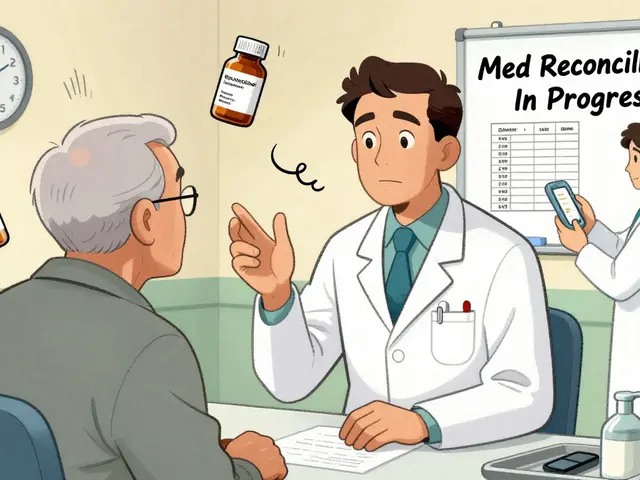
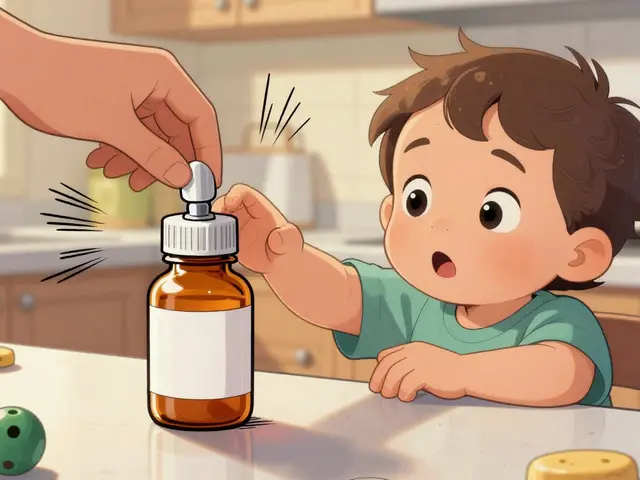
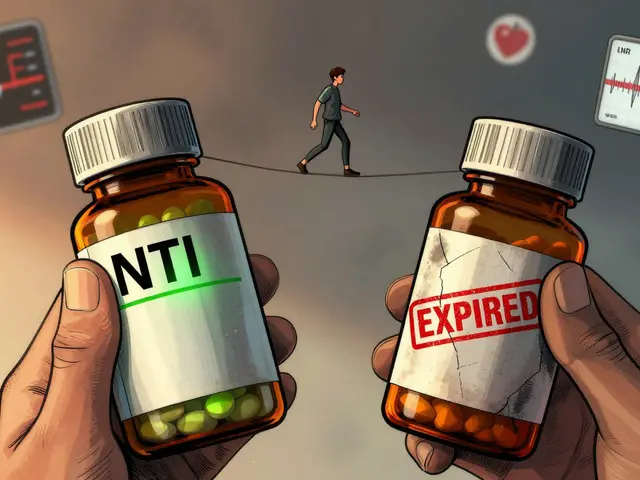
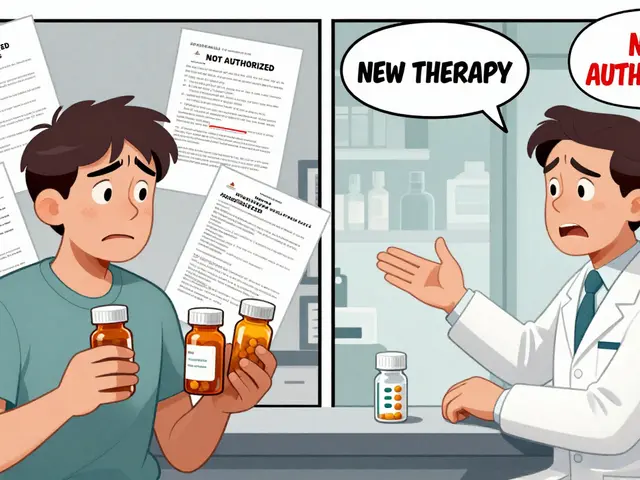
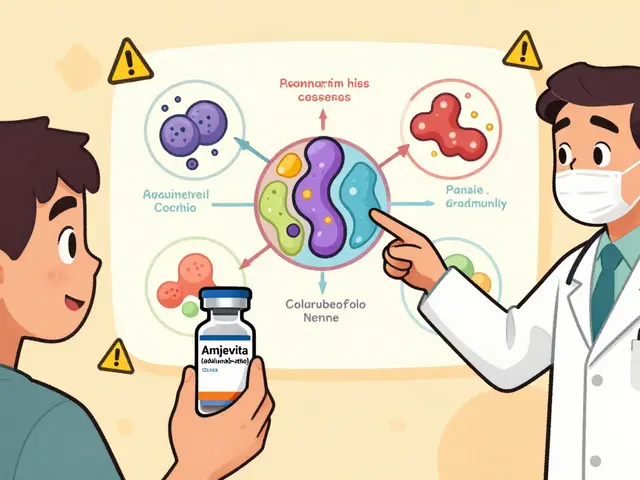
Leah Ackerson
October 26, 2025 at 15:51 PM
Choosing the right pill is like picking a compass for a stormy sea 🌊-you need something that points north, not just flashes neon lights. Acamprosate works on glutamate, which can soothe the brain’s over‑excited wiring after you quit. If your kidneys are solid and you can stick to three doses a day, it’s a decent anchor. But remember, no medication replaces the hard work of therapy and community support. 🌟